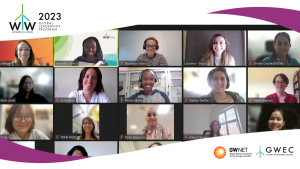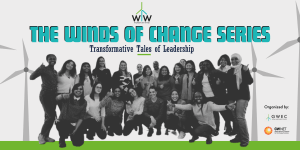What sort of challenges did you encounter in entering the sector?
In my own experience, recruitment channels in the industry can often be informal and final candidate selection can be biased towards industry veterans who have extensive experience with strong political capital. As a fresh postgraduate, I faced multiple challenges in trying to land my first big break and it took a lot of trial-and-error before I figured out where I would draw lines in the sand (what I was absolutely not willing to give up in my career vision).
If there is one piece of advice that I could give to anyone trying to break into this sector, it would be to use every “No” you encounter as an opportunity to recalibrate your approach until the feedback turns into a “Yes”, and to be fearless in grabbing the right opportunity. This is the philosophy I have applied in my own career. Having been fortunate enough to be mentored by renewables industry experts, I learned that in the long-term what really makes the cut is a sheer indomitable will to take risks, a passion and willingness to learn, and not being discouraged by setbacks that are inevitable.
If you had to pick one key issue facing women in the wind power sector, what would it be and why?
While progress has been made in gender-inclusive hiring practices in the industry, we are still nowhere near gender equity. This is highlighted in the under-representation of women in senior leadership positions across clean energy. As the investor base in the industry evolves to include mainstream institutions, my sense is that employers will be incentivized to move beyond gender diversity targets to introducing structural reforms to include women in key decision-making roles, introducing measures to support career development and employee retention, and practicing pay transparencies to promote pay parity within the sector. What this translates into is a more equal representation in the meeting room all the way to the boardroom.
To achieve climate neutrality in the coming decades, climate mitigation financing will be at the forefront of investments globally. We need a more equitable approach in determining how and where this capital gets deployed. Fundamentally, gender inclusion is just one aspect of a more equitable approach; racial equity is the other and I strongly believe that we need to work towards both objectives in tandem. Ultimately what we need is diversity in thought and leadership, and empowered leaders that value unique perspectives, can lead cross-cultural teams to achieve commercial targets and are relentless in their bid to address inequitable practices in the workplace.
Finally, what do you hope to achieve as a participant of Women in Wind Global Leadership Program? How will you contribute to the next generation of female leaders in the sector?
I am extremely honored to be a part of a cohort of inspiring women who are disrupting the renewable energy space globally and collaborating on this mission to improve gender inclusion in the industry. I have also been fortunate to have the support and guidance of my mentor and gain her insights in how to build a career vision in the long term, develop awareness of the blind spots in my career, and frame a winning ask at the negotiating table.
In paying it forward, I am committed to serve and support the next generation of aspiring women leaders in the renewable energy sector. Going forward, it is crucial for the younger generation that we transform the narrative. Instead of focusing on the lack of women in the industry, we have a responsibility to share success stories and the hard-earned wisdom of women who are thriving in this industry to set a precedent for the next generation of women leaders.





